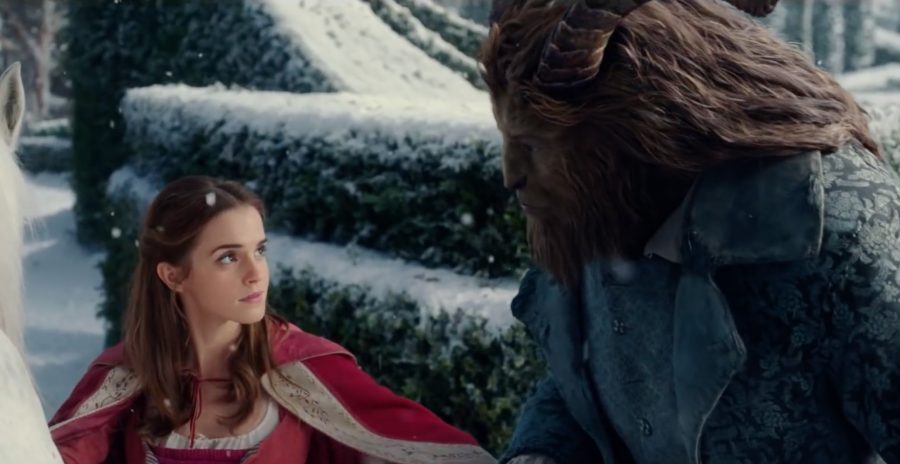Risk and Reward in Film Adaptations
April 6, 2017

You know that feeling when it’s announced that your favorite book is becoming a movie? More books than you can imagine have been adapted into movies, and in movies you thought were created from nothing nowadays have a high chance of having been based on books. There are the ones you know, like all those Nicholas Sparks movies
( becasue who doesn’t love a good ol’ sappy rom-com? ) and franchises like “Harry Potter,” “Twilight” and “The Hunger Games.” But then there are movies you thought were just that — movies. “Mrs. Doubtfire,” “101 Dalmatians,” “Shrek,” “Forrest Gump” and “Apollo 13” were all movies that were based on books.
There are obviously extreme similarities between fiction and feature, books and film. The same characters, plot and setting are all incorporated. However, soundtracks are added, characters are brought to life and the actors might portray scenes differently than what one might have imagined while reading. This is a major concern throughout the process of adapting books into movies.
The book publishing process is relatively easy. On the other hand, as Jane Friedman points out in her essay “How a Book Becomes a Movie,” producing a film is a whole other beast.
“The movie-making process is filled with U-turns, dead-ends, and uncertainty,“ Friedman wrote.
A book’s publication works like this: proposal review and approval, contract agreement, writing, production, publication, marketing and release. A movie’s production works similarly. However, authors often don’t have much control over the movie process and instead put their trust in the filmmakers.
First, there’s the pitch. What would be the benefit of this movie? Then comes the contract agreement. All the logistics — budgets, production schedules, who gets ownership and credits and so on — are set forth. Then, there is the development stage. Screenwriters have to be sought and hired — rarely does the author make their own screenplay. It is not uncommon to have multiple screenwriters in the process because the demands are so heavy. The film will either be accepted into production or trashed in the development stage. Production then assumes the responsibility of bringing the film together: the talent, the finance and the marketing.
What is at stake in the adaptation process, though? One of the wonderful things about reading is that everyone can create their own ideas of the characters’ looks, thoughts and interactions. Our minds fill in the empty space that words lend us. When books make it onto the big screen and the actors don’t meet one’s expectations, the letdown can be crushing.
When casting, producers must consider not only which actors will best embody the characters, but also which actors will draw the most viewers. Actors must use their popularity to attract the largest possible audience while still fulfilling the expectations of the book’s fans. For example, take Emma Watson in the live-action “Beauty and the Beast.” Watson is cute, likable and even resembles Disney’s original Belle. Everyone wants to see her on movie screens, and it’s easy to imagine her as your favorite childhood princess.
But this is a huge risk authors are willing to take. Without someone like Watson who can appeal to all expectations of the role, the situation can become controversial. For instance, casting Emma Stone in “Aloha” as an obviously white woman in the role of a native Hawaiian islander created a lot of backlash.
Whitewashing is a huge problem in the film industry. Stone is a popular actress and has a face that will gather a crowd to the theatres, but her casting compromises the film and the story as a whole. But the author unfortunately does not have much say in the matter once under contract.
So should authors risk losing profit at the risk of diminishing the reputation of their creations? Or should they pass up on an opportunity and shut down the option altogether? With movies like the “Harry Potter” and “Twilight” series, it is almost absurd not to take advantage of the book’s potential to become a movie. Profits in both of these franchises reached around $100 million within their first weeks.
But a film is less personal than its book — it targets a crowd instead of an individual. The majority of the audience will be composed of the book’s lovers and experts. Film adaptations always run the risk of being a huge disappointment to their fanbase.
However, movies can still add to their original stories. When readers see their favorite book come to life, it is magic — the viewer is like a kid at Disney World. When actors truly nail the role of the character, there is no better feeling for the audnence. Executing a movie-based-novel well does wonders — for the fans, for the author and for the film industry. The author and franchise will make millions.
Thus, the choice depends on the author’s goals. Do they write for the fame and fortune or for a more enlightening purpose? Do they seek money and worth, or acknowledgment and enjoyment of their work? When executed properly, a movie can gain money, publicity and acclaim. But this process is a hard one and is quite the toss up. Do they risk the reputation of their work in hopes of a whole new kind of success, or do they remain complacent with what they have, with the possibility of missing a huge opportunity? The risk, ultimately, never goes away but neither hard-and-fast rules nor time can predict success.
A version of this article appeared in the Thursday, April 6 print edition.
Email Caroline Zemsky at [email protected].

